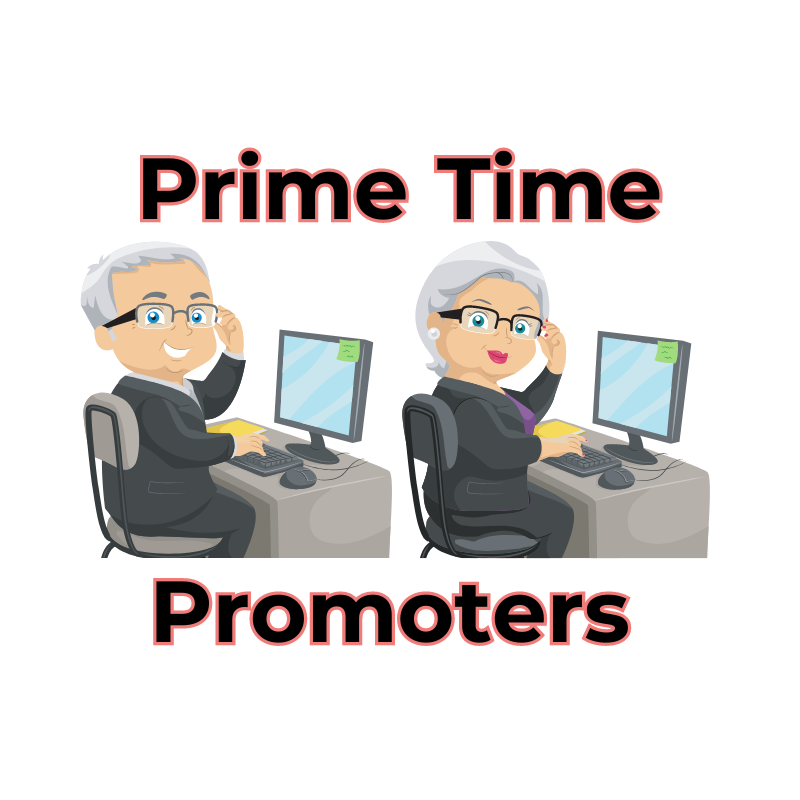You have a passion for affiliate marketing and a keen eye for writing captivating content. But how can you ensure that your blog is truly engaging and keeps your audience coming back for more? In this article, we will explore the art of creating engaging content for your affiliate marketing blog. From crafting attention-grabbing headlines to leveraging storytelling techniques, we will provide you with the essential tools and strategies to captivate your readers and maximize your affiliate marketing potential. Get ready to take your blog to new heights and build a loyal following that will skyrocket your success.
LIMITED TIME INVITATION: FOR SERIOUS MARKETERS ONLY
Discover how my mentor, John Thornhill, is helping me generate 6 figures online in record time.
This is an exclusive online invitation to learn from a ClickBank Platinum Vendor that has received
over 100 5-star reviews for this training.
Includes exclusive bonus videos, worksheets, mind maps, and checklists that you can use to
implement to get results fast.

Choosing the Right Niche
When it comes to starting an affiliate marketing blog, choosing the right niche is crucial. A niche is a specialized segment of a market that caters to a specific audience. The first step in selecting a niche is researching popular ones. You want to find a niche that has a substantial audience and is in high demand. Look for topics that people are talking about and actively searching for online. This can be done by using tools like Google Trends or keyword research tools. By understanding the popularity of different niches, you can identify the ones that have the potential to attract a large audience.
Once you have identified popular niches, the next step is to identify your target audience. Your target audience is the group of people who are most likely to be interested in the content you will be sharing on your blog. Understanding your audience is crucial because it helps you tailor your content to their specific needs and interests. Conduct audience research to gain insight into your target audience’s demographics, interests, and behavior. This can be done through online surveys, market research, and social media analytics. The more you know about your audience, the better you can serve them with valuable and relevant content.
After researching popular niches and identifying your target audience, the next step is to analyze the competition in the niche. Competitor analysis allows you to understand what other blogs or websites are offering in your niche and how you can differentiate yourself. Take a look at the top blogs in your niche and analyze their content, design, and audience engagement. Look for gaps or areas where you can provide unique value. This analysis will help you understand what is already successful in your niche and what you can do differently to stand out.
Understanding Your Audience
To effectively engage your audience, you must have a deep understanding of their wants and needs. Conducting audience research is a crucial step in this process. There are several methods you can employ to gather information about your audience. Online surveys, interviews, and focus groups can provide valuable insights into your audience’s preferences, challenges, and pain points. Analyzing social media analytics and conducting keyword research can also help you understand the topics or keywords your audience is searching for online.
Creating buyer personas is another effective way to understand your audience. A buyer’s persona is a fictional representation of your ideal customer. It helps you visualize and empathize with your target audience, making it easier to create content that resonates with them. When creating buyer personas, consider factors such as age, gender, occupation, hobbies, and interests. This will help you create a more personalized and targeted approach to your content creation.
Identifying pain points and needs is essential in creating content that your audience will find valuable. Pain points refer to the challenges, problems, or frustrations that your audience faces. By understanding these pain points, you can create content that addresses these issues and provides solutions. Conducting keyword research and analyzing social media conversations can help you identify common pain points in your niche. Once you know what your audience is struggling with, you can create content that offers helpful insights, tips, and strategies to overcome these challenges.
Developing a Content Strategy
A well-defined content strategy is the foundation of a successful affiliate marketing blog. Before diving into creating content, it is crucial to define your blog’s purpose and goals. Ask yourself what you want to achieve with your blog. Are you looking to educate your audience, drive traffic, or generate sales? Defining your purpose and goals will help you stay focused and ensure that your content is aligned with your overall strategy.
Creating an editorial calendar is another important aspect of developing a content strategy. An editorial calendar is a road map for your content creation efforts. It helps you stay organized and ensures that you consistently publish content that aligns with your goals. Start by brainstorming content ideas and categorizing them based on themes or topics. Then, assign each piece of content to a specific date or time frame. Having a clear plan of what content you will create and when you will publish it will help you stay on track and maintain consistency.
Brainstorming content ideas is an ongoing process in content creation. Generate a list of potential topics that are relevant to your niche and interesting to your target audience. Look for trending topics, frequently asked questions, or emerging trends in your industry. Use tools like Google Trends or social media monitoring tools to identify popular discussions or conversations online. By constantly generating fresh and compelling content ideas, you can ensure that your blog remains engaging and relevant to your audience.
Writing Compelling Headlines
The headline of your blog post is the first thing that grabs your reader’s attention. It is crucial to write headlines that are both attention-grabbing and informative. Using attention-grabbing words is one way to immediately capture your reader’s interest. Words like “ultimate,” “essential,” or “proven” can make your headline stand out and entice readers to click and read more. Another important aspect of writing compelling headlines is including relevant keywords. Incorporating keywords that your audience is searching for can boost your organic search visibility and attract more readers to your blog.
A/B testing headlines is a great way to determine which headlines are the most effective. Create multiple versions of a headline and test them to see which one performs better. This can be done by conducting split tests and tracking metrics such as click-through rates or time spent on the page. By analyzing the data from these tests, you can gain insights into what types of headlines resonate most with your audience and optimize your future content accordingly.

Creating Valuable and Informative Content

Content that provides value and actionable advice is crucial to engaging your audience and building trust. Before writing, it is important to do thorough research on the topic you are addressing. This ensures that you have accurate and up-to-date information to share with your readers. High-quality and reliable content will establish you as an authoritative source in your niche and keep your audience coming back for more.
Providing actionable tips and advice is another way to make your content valuable. Instead of just presenting information, offer practical steps or strategies that your audience can implement in their own lives. This allows your readers to see tangible results from your content and encourages them to continue consuming it in the future. Consider providing real-life examples or case studies that illustrate the effectiveness of your advice.
Including relevant statistics and data in your content adds credibility and helps support your arguments. Facts and figures can strengthen your claims and provide additional insights for your audience. Conduct thorough research and include reputable sources to back up your statements. This not only increases the trustworthiness of your content but also provides valuable information that your audience can rely on.
Using Eye-catching Visuals
Visual content is a powerful tool when it comes to engaging your audience. High-quality images can capture attention and make your blog posts more visually appealing. Select images that are relevant to your content and resonate with your audience. Use stock photo websites or consider taking your own photos to ensure the uniqueness and authenticity of your visuals. Avoid using low-resolution or generic images that may detract from the overall quality of your blog.
In addition to images, creating infographics and videos can further enhance your content. Infographics condense complex information into visually appealing and easy-to-understand graphics. They are highly shareable and can attract more traffic to your blog. Videos, on the other hand, provide a dynamic and interactive experience for your audience. Consider creating tutorial videos, product demos, or interviews to engage your viewers and keep them coming back for more.
Using engaging graphics and icons within your blog posts can also help break up text and make your content more visually appealing. Incorporate relevant graphics, charts, or icons that support your content and make it easier to scan. This visual enhancement can improve the overall user experience and encourage readers to consume your content more thoroughly.

Incorporating SEO Techniques
Optimizing your content for search engines is crucial for attracting organic traffic to your blog. Start by identifying target keywords that are relevant to your niche and frequently searched by your audience. Incorporate these keywords naturally throughout your blog posts to increase your chances of ranking higher in search engine results. However, it is important to avoid keyword stuffing, as it can negatively impact your site’s ranking.
Using relevant meta tags and descriptions is another important aspect of SEO. Meta tags are HTML elements that provide information about your web page to search engines. Include relevant keywords and a concise description of your content in these tags to improve your visibility in search results. Meta descriptions, on the other hand, are brief summaries that appear below your page title in search results. They should be engaging and compelling, encouraging users to click and visit your blog.
Building backlinks is another effective SEO technique for improving your blog’s visibility. Backlinks are links from other websites that point to your blog. They act as a vote of confidence from other sites, indicating to search engines that your content is valuable and trustworthy. You can generate backlinks by reaching out to other bloggers or influencers in your niche, guest blogging, or creating valuable content that others naturally want to link to. The more backlinks you have from reputable sites, the higher your blog’s authority and search engine ranking.
Engaging with Your Audience
Engaging with your audience is crucial for building a loyal and interactive community around your blog. Responding to comments and messages shows that you value and appreciate your readers’ input. Take the time to answer questions, address concerns, and acknowledge feedback. This not only helps build trust but also encourages readers to continue engaging with your content.
Encouraging social media interaction is another effective way to engage with your audience. Share your blog posts on social media platforms and invite readers to leave comments or share their thoughts. Respond to social media comments and questions promptly to nurture ongoing conversations. Consider running contests or giveaways to incentivize social media engagement and reward your audience for their active participation.
Conducting surveys and polls is a great way to gather feedback and understand your audience’s preferences. Ask your readers about their interests, favorite types of content, or topics they would like to see more of. This not only provides you with valuable insights but also makes your audience feel involved and heard. Use survey results to tailor your content and ensure that it aligns with your audience’s desires.
Promoting Your Content
Promotion is a crucial component of driving traffic and expanding your blog’s reach. Sharing your blog posts on social media platforms is an effective way to increase visibility and attract new readers. Identify the social media platforms that are popular among your target audience and share your content regularly. Consider creating eye-catching visuals or using engaging captions to make your posts stand out.
Collaborating with influencers and bloggers in your niche can also help promote your content. Reach out to influencers who have a similar target audience and propose collaboration opportunities. This can include guest posting on each other’s blogs, co-creating content, or promoting each other’s content through social media or email newsletters. By leveraging the existing audience and credibility of influencers, you can expand your reach and attract new readers to your blog.
Creating newsletters and email campaigns is another effective way to promote your content and engage with your audience. Encourage readers to subscribe to your newsletter and send regular emails featuring your latest blog posts, exclusive content, or special offers. Personalize your emails based on your audience’s preferences and provide value in each communication. This will help you build a loyal subscriber base and drive traffic to your blog.
Analyzing and Improving Performance
Analyzing your blog’s performance is important to understand what is working and what needs improvement. Tracking website traffic and user engagement metrics can provide valuable insights into how your audience is interacting with your content. Use tools like Google Analytics to monitor metrics such as page views, bounce rates, and time spent on page. Identify patterns or trends in the data to determine which types of content are performing well and which ones need adjustment.
Using analytics tools to measure ROI is crucial for understanding the effectiveness of your content marketing efforts. Set specific goals and track key performance indicators (KPIs) that align with your goals. This could include metrics such as conversion rates, email sign-ups, or affiliate sales. By measuring the ROI of your content, you can make data-driven decisions and allocate resources effectively.
Making data-driven adjustments based on your analysis is crucial for continuous improvement. Use the insights gathered from your analytics to optimize your content strategy, improve engagement, and drive better results. Experiment with different content formats, topics, or promotional strategies based on what the data tells you. By constantly iterating and refining your approach, you can ensure that your blog remains engaging and valuable to your audience.
LIMITED TIME INVITATION: FOR SERIOUS MARKETERS ONLY
Discover how my mentor, John Thornhill, is helping me generate 6 figures online in record time.
This is an exclusive online invitation to learn from a ClickBank Platinum Vendor that has received
over 100 5-star reviews for this training.
Includes exclusive bonus videos, worksheets, mind maps, and checklists that you can use to
implement to get results fast.

